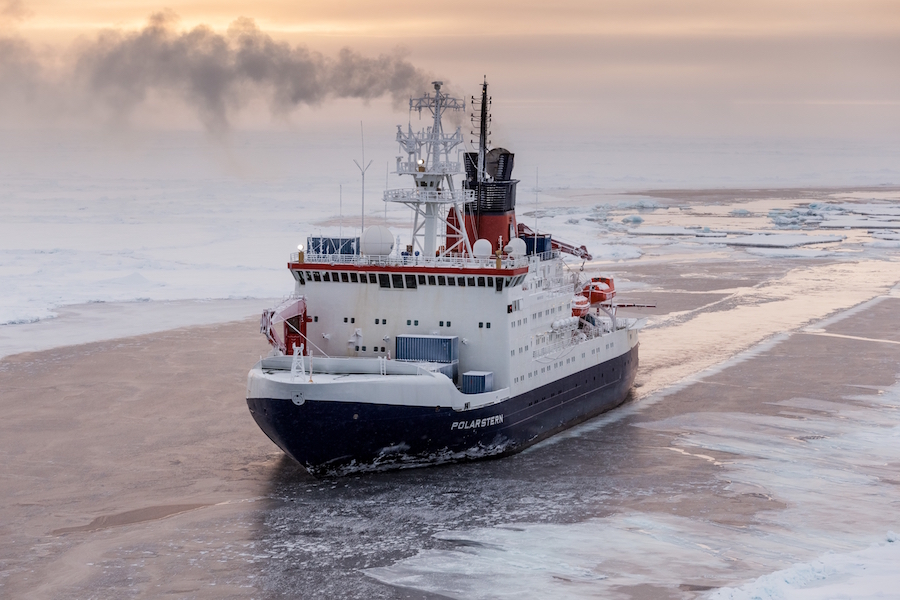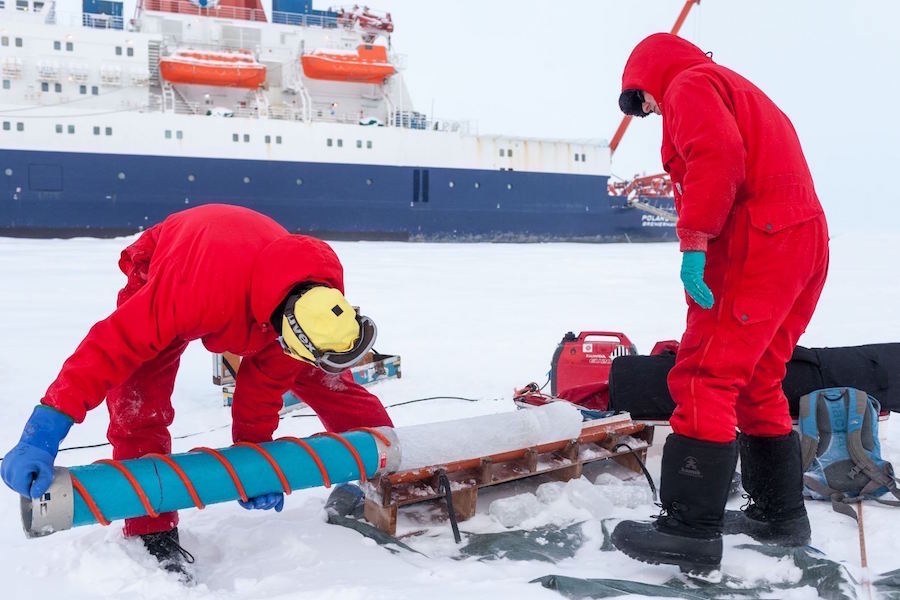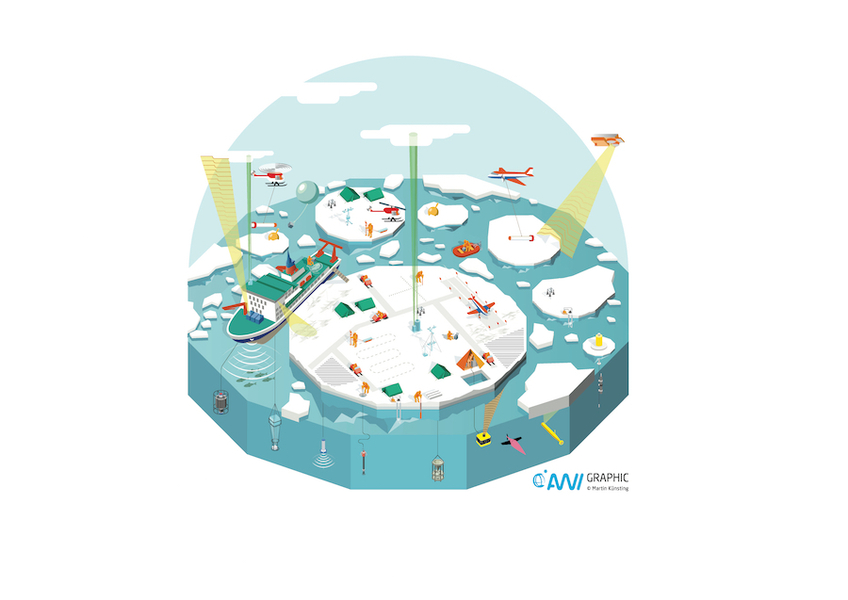German Polar Research
1991 the first permanent German Arctic research station was inaugurated in Ny-Ålesund on Spitsbergen. The base is operated by the German Alfred Wegener Institute (AWI) together with the French Polar Institute Paul-Emile Victor (IPEV).

The AWIPEV base, which represents a great milestone in the development of German polar research, has two key tasks: It serves as a versatile climate observatory, collecting long-term meteorological data series which can be used to interpret atmospheric-chemical parameters. Researchers are also studying the condition of the permafrost ground, glaciers, and the Kongsfjorden (Kings Bay). On the other hand, the base provides a platform for scientists from German, French and Dutch universities and institutes to conduct both short-term and multi-annual studies.
The Alfred Wegener Institute, Helmholtz Centre for Polar and Marine Research (AWI), is the leading player in German polar research but universities, other non-university research institutions and industry also contribute to research in the polar regions. The AWI and the Federal Institute for Geosciences and Natural Resources (BGR) are both intensely involved in research into the North and South Poles, but institutes of the Max Planck Society and the Leibniz Association as well as universities from throughout Germany also contribute to collecting details on the Arctic and the Antarctic, climate and polar resources. The activities of the universities are planned by the Scientific Committee on Antarctic Research (SCAR)/International Arctic Science Committee (IASC), which cooperates closely with the AWI and federal institutions.

Another important partner in coordinating activities is the German Society of Polar Research, where scientists in various disciplines work together to promote research into the Arctic and the Antarctic. The most important answers to urgent, vital research questions were published in 2017 in the Polarforschungsagenda 2030 (PDF, 16MB, File does not meet accessibility standards). The agenda was compiled by the National Committee for Polar Research (DGF) with contributions from numerous authors from seventeen German research institutes.
Two years previously, the Federal Ministry of Education and Research (BMBF) published a brochure on global responsibility for polar research entitled “Schnelle Veränderungen in der Arktis – Polarforschung in globaler Verantwortung”.
Strengthening international cooperation
Various research institutes are conducting experiments in cooperation with partners from Europe, Russia, Canada and the United States to gain insights into the geological, meteorological and geophysical peculiarities of the polar regions. These include experiments in the Fram Strait between Spitsbergen and Greenland and in the Laptev Sea situated to the north of Russia. Cooperation between different countries and continents is important in order to pool relevant expertise and manage the logistical complexity of the expeditions. The various countries employ not only research vessels but also aircraft that are adapted to meet the specific conditions of the icy landscape.
MOSAiC and YOPP: Trapped in the ice and weather forecasts

The AWI will play a major role in two projects over the next two years.
The POLARSTERN research vessel will set out on the biggest Arctic expedition of all times in 2019. The “Multidisciplinary Drifting Observatory for the Study of Arctic Climate” (MOSAiC) project, which is being conducted jointly by the AWI, the Arctic and Antarctic Research Institute (AARI) and the Cooperative Institute for Research in Environmental Sciences (CIRES), will involve the research vessel trapped in the ice of the Siberian Sea for twelve months.
Varying teams of scientists from seventeen nations will study the Arctic in the course of the year – including during the Arctic winter. The route they will take is still unclear and can only be roughly estimated due to the varying ice drift. The data collected will help to better understand the Arctic climate and global warming processes. In addition, the “Year of Polar Prediction” (YOPP) research initiative will be studying climate changes at both Poles until mid-2019. Its findings are to be used as a basis for improving weather forecasts. This would minimize dangers – for example, to shipping. The new data will serve to complement existing climate models, thus making weather forecasts for the Arctic and Antarctic more reliable. YOPP aims to close observation and monitoring gaps. In addition to the AWI, participants in the initiative include the World Meteorological Organization (WMO) and partners from over twenty countries.